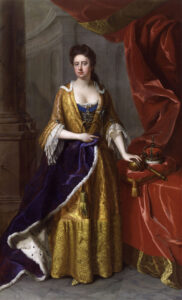How does a Privateer create a Métis legacy? The late 1600s into the early 1700s was a time period fraught with danger and upheaval. For the colonies, this was an especially trying time as settlers from various countries had to not only build their settlements, but had to do so under a fairly constant threat of attacks or raids from the other side. Sometimes these raids were simply for resources. Often during this time period, however, raids had the goal of gaining live captives that would then later be ransomed for gold or utilized in prisoner exchanges or for political leverage.
The Privateer Connection
Many Metis can trace their lineage back to Josiah Rising (Ignace Raizenne) and Abigail Nims (Elizabeth Nims). These two people, both captives from the Raid on Deerfield in 1704 and re-settled in Quebec, Canada (then New France), married and became fountainheads for many Métis families in modern times. However, what’s not often spoken about is the story behind the raid itself, and the historical events that led to the circumstances that made this union possible. It truly starts with one man, and that man is not native at all. He never met Josiah or Abigail, nor any of the people of Deerfield that were victims of the raid. We’re going to start out here.
Between the 1650’s-1730’s was known as the Golden Age of Piracy. There were various types of “pirates” marauding coasts and shipping lines from north in Acadia down to the northern coast of South America. Many of the famous pirates, such as Blackbeard, lived and terrorized during this time. However, not all pirates were acting for themselves. This was a risky job and rather expensive, not everyone was willing or able to be a pirate. Instead, many worked as “Privateers”. These fellows were not quite pirates, but were actually more like private contractors working on behalf of their patron countries. Provided with a “Letter of Marque”, they were given permission to attack the ships of an enemy government, usually during wars, in exchange for supplies, support, and a percentage of the bounty. The rest was returned to the crown.
As you could imagine, these Privateers were very useful tools. They made enemies lives difficult while providing an easy means for capital to fund the expensive undertaking of building the colonies. One such man, Pierre Maisonnat dit Baptiste, was one such privateer for the French crown. He made quite a name for himself as a man who could get out of slippery situations, as he survived multiple captures, escapes, and close-calls, but also as a man who could get the job done. He was extremely successful at disrupting New England merchant shipping and fishing interests, and protecting the same for the Acadians.
After many successful ventures, however, Pierre Maisonnat’s escapades caught up to him, and he was captured the final time protecting Acadian fishing interests off of the coast of Acadia, and was imprisoned in Boston on the eve of Queen Anne’s war in 1702.
With the start of Queen Anne’s War, Queen Anne ordered that no prisoners were to be exchanged as was the usual practice during times of war. Instead, she wanted Pierre Maisonnat dit Baptiste hanged, because he was an officer of the garrison at Port Royale during peacetime (a significant point of conflict at the time), and he had failed to recover his freedom on the grounds of being a pirate.
When word of this sentence reached Jacquest-Francois del Montebon de Brouillan, who was then the French Governor of Plaisance, Newfoundland, and Acadia, he was furious at the potential loss of someone he saw as important to his cause. He sent an express messenger to Boston, where Baptiste was being held, warning of retaliation if Baptiste was killed. Fortunately for Baptiste, this saved his life. Unfortunately for him, this did not mean he was to be released, only for his execution to be stayed, so he remained imprisoned in Boston, while the French Governor tried to find enough leverage to get his man back.
The Raid on Deerfield
To secure the return of Baptiste, the French Governor planned to raid Deerfield in alliance with the Mohawk of the Iroquois, the Abenaki from northeast New England, and the Pocumtuc. Their goal was to capture a prisoner of equal value in order to broker an exchange for their man’s release. Despite the fact that the English had anticipated an attack and there were some English troops present, the coalition force managed to capture Reverend John Williams, a prominent man in the community, along with 100+ settlers with their raiding force of about 300 men.
This raid was the beginning of an epic journey that completely changed the lives of those involved. John Williams was captured, along with his family and their African slaves. Also captured in the raid were 10 year old Josiah Rising, and 4 year old Abigail Nims. All of the captives were then taken on a long, gruelling journey of 300 miles (480 kms) through the harsh winter weather to reach Fort Chambly in Quebec, Canada. During the journey, Reverend William’s wife was killed by a Mohawk man after falling ill on the journey. Several others died or were killed along the way.
Williams himself was treated well by the Jesuit missionaries during his captivity, and recorded his impressions of life in colonial New France. He was, after all, a pawn being held for ransom, and treating him badly would not help secure the release of Pierre. John Williams was indeed deemed a valuable enough victim to exchange for the notorious Pierre Maisonnate dit Baptiste, and the exchange was finalized.
Upon confirmation of the release of Baptiste from his prison cell in Boston, John Williams was released by Quebec governor, Phillipe de Rigaud Vaudreuil, and returned to Boston in 1706 along with several of his children.
He was forced to leave one of his children behind, 10 year old Eunace. She was adopted by a Mohawk family in Kahnawake, taking the place of their child who died of smallpox. She became completely assimilated to native life. She was baptized as a Catholic, as were many Mohawks, taking the Catholic name of Marguerite. Her Mohawk name was Kanenstenhawi. Williams later wrote a book called “The Redeemed Captive” about his experiences as a captive, and it was widely read throughout the colonies at the time.
Many men and women who were “redeemed”, or ransomed, decided to stay behind in their adoptive communities. Among these were Josiah and Abigail, and their decision would start a Metis legacy that is still alive today. All of this because of a slippery privateer with a reputation for mayhem.
In our next post, we will discuss the lives of Abigail and Josiah, and that of one of their daughters: Marie Anne Raizenne.
Sources:
https://en.wikipedia.org/wiki/Raid_on_Deerfield
http://www.biographi.ca/en/bio/maisonnat_pierre_2E.html
http://raking-leaves.blogspot.ca/2012/04/lanthier-blood-flows-from-deerfield.html


